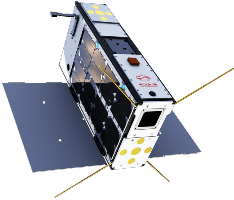| Description |
The primary objective of this mission will be the testing of Rogue’s developments in mission operations and algorithms for future In-Space Logistics services, requiring close-proximity maneuvering and docking. OTP-2 will have one undisclosed payload, a new propulsion system, an encryption system, a new edge computing device and 5 optical sensors in addition to the spacecraft’s star tracker. Additionally, Rogue will carry out the demonstration and on-orbit testing of these four cutting-edge payloads that will uniquely augment OTP-2.
Rogue will be flying their next generation Scalable Compute Platform (SCP) to provide critical computer vision, autonomy, and AI computations through Edge Computing. Rogue will be using the SCP as a testbed for algorithms that will support future RPOD and Logistics operations like the new ASTRA autonomy system. Rouge will be testing ASTRA’s ability to autonomously maintain the spacecraft’s health and execute operational “goals” given to it by the operators, selecting appropriate actions to balance competing priorities and opportunities. Rogue is also offering commercial software hosting on board the SCP to customers to test out their algorithms in space. This effort will be supported by a customer test bench at Rogue HQ to confirm suitability before uploading to the satellite.
OTP-2 will also have 5 cameras of two classes that directly interface with the SCP. Rogue anticipates using OTP-2 as a cooperative target for the next RPO capable mission OTP-3 planned for launch in 2026.
A mission to perform a series of test maneuvers that will demonstrate the capabilities of Rogue’s Orbital Test Platform-2 (“OTP-2”) for in-orbit servicing missions. Rogue’s Orbital Test Platforms are being developed to facilitate space sustainability and to address on-orbit satellite servicing needs.
OTP-2 will conduct maneuvers to demonstrate orbit raising and lowering capabilities and test two disparate experimental thruster systems. OTP-2 will also use onboard cameras to map the local space environment, another in-orbit service the Rogue will provide.
- **Mile Space – Firestar Water Ion Thruster - **The objective of the Firestar thruster is to test the system in the LEO environment and qualify its thrust, power consumption, pointing accuracy and specific impulse. The thruster uses a novel combination of distilled and boronated water as dual propellent.
- Estimated Thrust: 20 mN
- Estimated ISP: 7200s
- Propellent mass: 85g pure water, 80g boronated water
- Calculated Delta-V based on above specifications: 1,077 m/s
- **IVO – Quantum Drive Propellantless Thruster - **The objective of the IVO Quantum Drive is to test the system in the LEO environment and qualify the drive’s ability to provide thrust utilizing proprietary quantum technology with no required propellant. Estimated Thrust: 1.75mN.
- **Forward Edge – Quantum Encryption Communication Device - **The objectives of the Isidore Quantum payload are to demonstrate the operational feasibility and mission value of a low Space, Weight and Power and cost (SWaP-C), quantum-resistant, cyber resilient, high assurance endpoint encryption device with an embedded real-time machine learning capability to learn the patterns of life, detect anomalies, and initiate an immune system-like response to infrastructure attacks.
|




